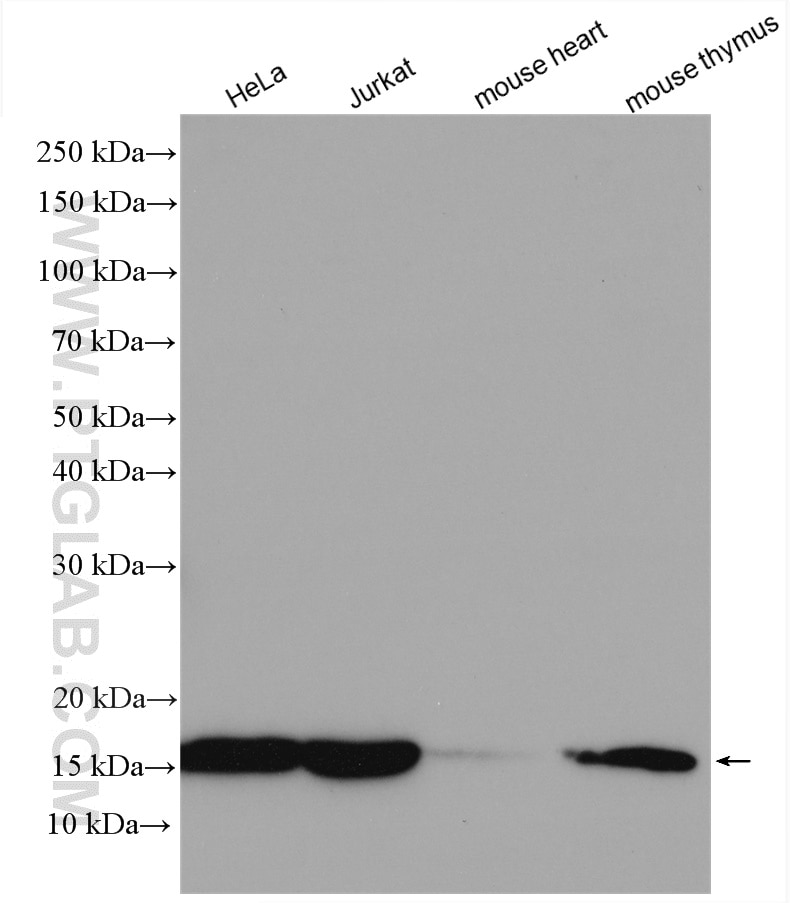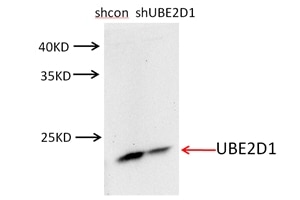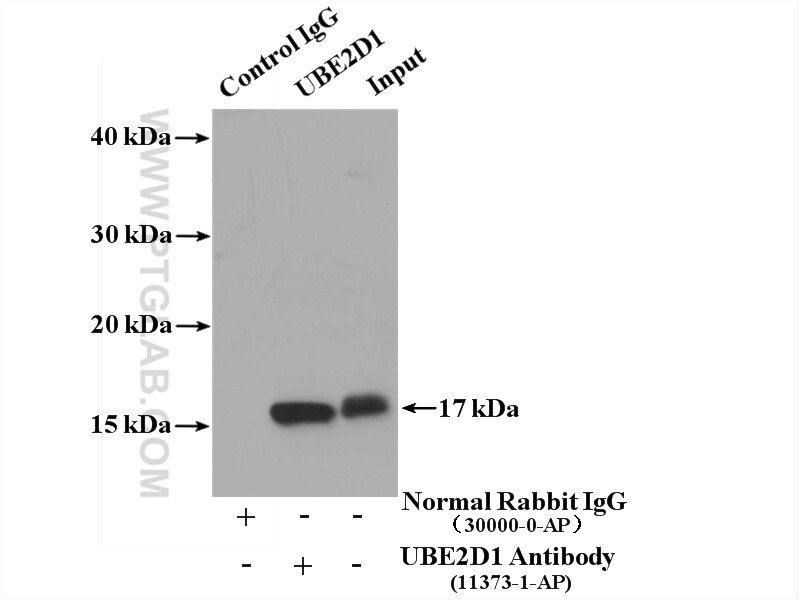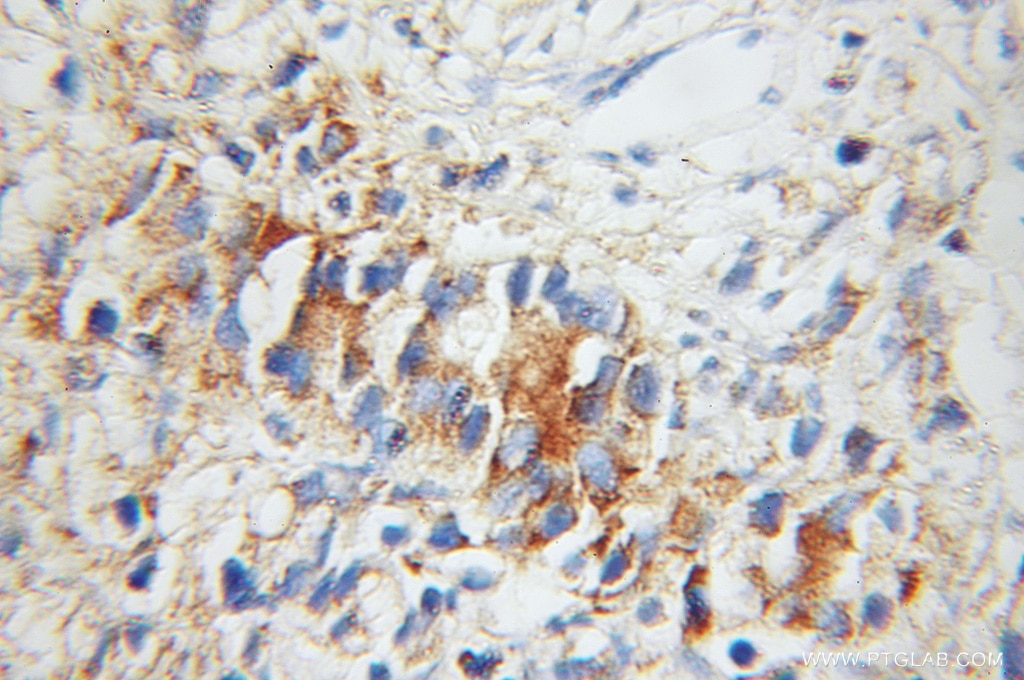Validation Data Gallery
Tested Applications
Recommended dilution
| Application | Dilution |
|---|---|
| It is recommended that this reagent should be titrated in each testing system to obtain optimal results. | |
Product Information
11373-1-PBS targets UBE2D1/2/3/4 in WB, IHC, IP, Indirect ELISA applications and shows reactivity with human, mouse, rat samples.
| Tested Reactivity | human, mouse, rat |
| Host / Isotype | Rabbit / IgG |
| Class | Polyclonal |
| Type | Antibody |
| Immunogen | UBE2D1/2/3/4 fusion protein Ag1932 相同性解析による交差性が予測される生物種 |
| Full Name | ubiquitin-conjugating enzyme E2D 1 (UBC4/5 homolog, yeast) |
| Calculated molecular weight | 17 kDa |
| Observed molecular weight | 17 kDa |
| GenBank accession number | BC015997 |
| Gene Symbol | UBE2D1 |
| Gene ID (NCBI) | 7321 |
| RRID | AB_2210129 |
| Conjugate | Unconjugated |
| Form | Liquid |
| Purification Method | Antigen affinity purification |
| UNIPROT ID | P51668 |
| Storage Buffer | PBS only , pH 7.3 |
| Storage Conditions | Store at -80°C. |
Background Information
Ubiquitination is a post-translational modification pathway or is part of the specific protein-degradation pathway by the 26S proteasome. Ubiquitination of a target protein involves multistep enzymatic reaction catalyzed by a cascade of enzymes including Ub-activating enzymes (E1s), Ub-conjugating enzymes (E2s) and Ub ligases (E3s) (PMID: 23542885). UBE2D family, which has 4 members named as UBE2D1/2/3/4, is an E2 ubiquitin-conjugating enzyme family in the ubiquitin-proteasome system. This antibody can recognize all the four members of UBE2D due to the high homology.




